
Seed Packets Catalog – How to Organize your Seeds for under $15
Seed Packets Organization – Easy and Cheap!
Seed packets are my impulse purchase. I get lured in by the low prices and the hope that maybe my crops will look like the photos. If you’re reading this, chances are you’ve found yourself like thousands of others…buried under baskets and containers full of seeds, with no rhyme or reason or “method to your madness.”
The moment I realized that I had to do something different to track my seeds was when I went looking for some basil seed packets. I didn’t just find one packet; I found eight. No one – not the world’s largest pesto manufacturer – needs eight packets of basil seeds (with thousands of seeds per packet) sitting in their gardening cabinet.
Turns out…basil is my ultimate impulse purchase!
That’s when I decided it was time to take inventory and stay on top of my seed packets, once and for all!
Flower, Vegetable, and Herb Seed Packets
Whether you are a flower, vegetable, herb, or ANY kind of gardener, this method is a great way to organize all of your seed packets in one easy-to-use place. I like to grow all kinds of plants in my garden, so this organization system is perfect for my fellow “hodge podge” gardeners!
I have found that every type of seed (whether flower, vegetable, or herb seeds) stores very well with this method. I’ve taken to collecting seeds in my very own garden (especially native desert flowers which you can see here). It’s important that if you’re storing seeds that you’ve collected from your own garden or from outside, that they’re very dry before storing. I leave mine in a cool, dry location for a few days after harvesting. That’s the best way to ensure they’re dry and won’t mold in the packets. All it takes is one moldy seed in the batch to ruin the entire packet.
In the fall, it’s actually a race against time to collect some of my seeds before the birds get them! I am an avid Backyard Birdwatcher (checkout my system for attracting Hummingbirds and beautiful Songbirds to my yard, year-round). Birds, especially goldfinches, will devour my sunflower seeds if I don’t harvest them as soon as they’re ready!
You can see in the following picture all of the seed packets that I bought on a recent trip to get milk 🙂
Water-Wise Flower Seeds Available NOW!
How I Organized My Seed Packets
My Seed Packets Catalog is made of a heavy duty 3″ 3-ring binder, baseball card sleeves (I prefer 3×3), recycled file folders (with 3 holes punched in them) as dividers, and 2″x3″ little manila envelopes (or similar size). I put them all together in my binder. Here’s some awesome prices (especially on the baseball card sleeves, that’s for 25 pages):
Once my binder was constructed, I created my sections. I have one for herbs, one for vegetables, one for fruits, and one for flowers (right now my annuals and perennials are in the same section). I use my recycled file folders with three holes punched for each major section. These stick out further than the baseball card sleeves which is perfect.
Next I filled the three sleeves (each row is for one seed type). Using a scissors, I cut each seed packet, pouring seeds into the little bags and cutting the front and back of the packets down to size for my sleeves (see my photos below). Be sure to read below about Paper Envelopes vs. Plastic Baggies! Which you choose will depend on your region’s weather.
From left to right, I put seed information, the bag of seeds, and the picture. The goal is to easily see the plants as I flipped through the catalog; that’s why the picture is on the outside. A Sharpie was perfect for writing the seed names on each baggie, in case they get mixed up.
Paper Envelopes vs. Plastic Baggies
Honestly, I’ve had great success using either paper envelopes (like the ones pictured below) or small 2″x3″ plastic baggies. That’s because I live in the high desert and don’t really have a moisture problem. There is very little humidity in my region, so I think that’s why plastic baggies have worked in my seed packets binder.
When I lived on the Eastern Seaboard, that was not the case! There was so much moisture and humidity in the air year-round. I couldn’t store my seeds in the plastic baggies without having the whole lot get moldy – even when I did let them dry out. My family who lives in the Midwest says the same thing. They have to use paper envelopes just like many of you.
Depending on where you live, you’ll have to decide for yourself. If you live in a dry region like me, then plastic baggies will work (and they’re very cost effective). If you live somewhere with humidity, then definitely choose the paper envelopes. They allow the seeds to stay dry and prevent untimely molding of your seeds.
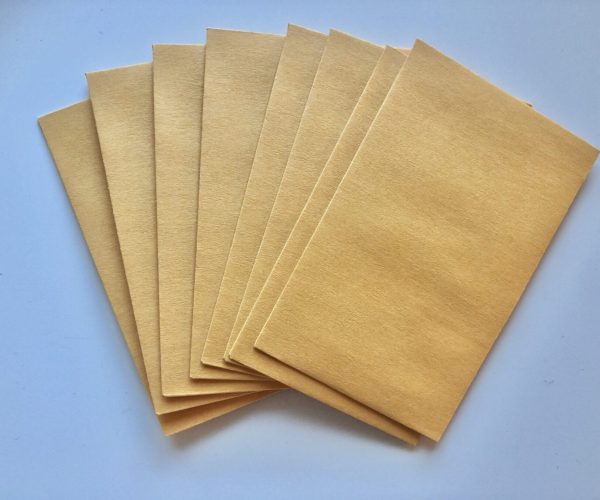
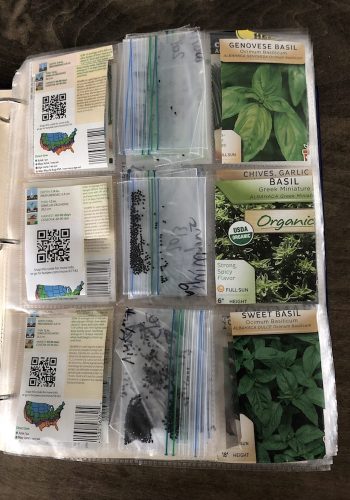
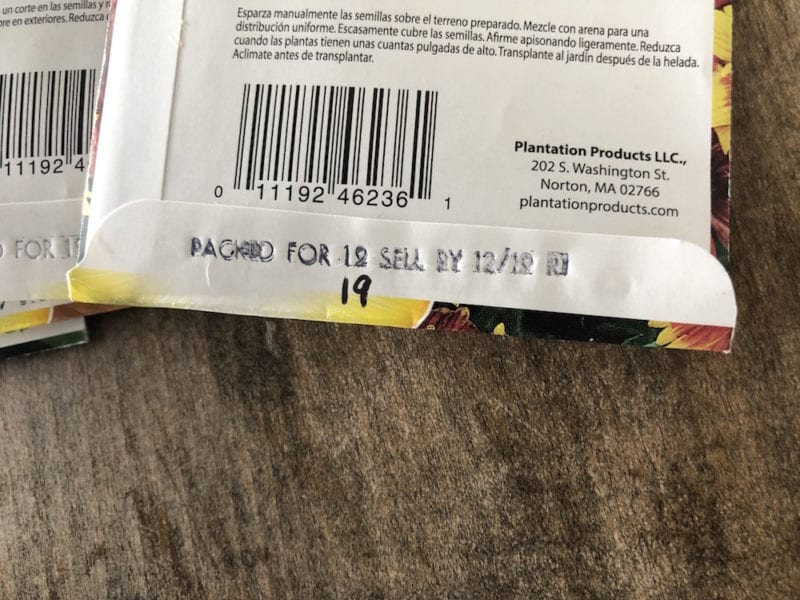
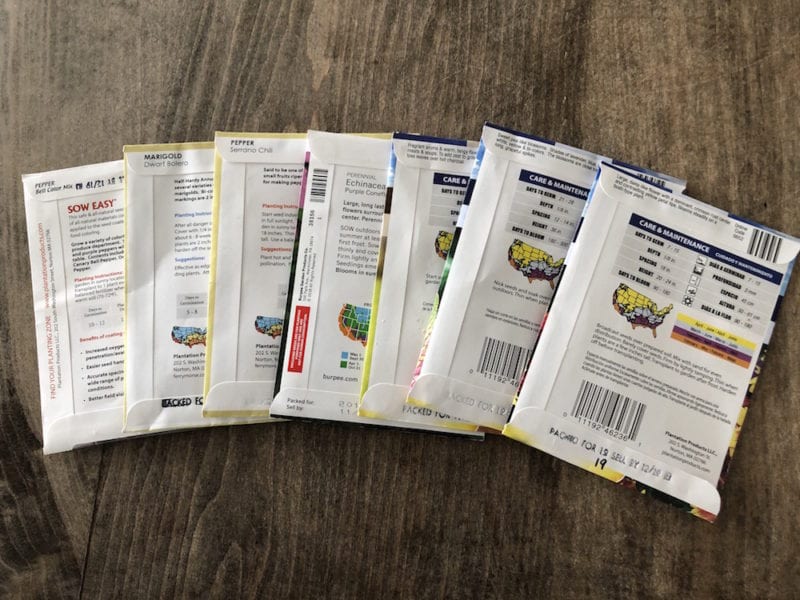
How It Works Now
My Seed Packets Catalog has been a game-changer for me. As you can see in the photo above, I seem to buy basil each time I buy seeds! This Catalog helped me see that, so I am now working through my basil seeds with a firm commitment not to buy more! (Do you have a seed type that you strangely stock up on?)
This growing season, I started working through my seeds to determine viability. I did this by putting 5 seeds in a damp paper towel in a plastic baggie, watching for germination. Several seeds have been tossed because I’ve held onto them for too long, and they’re no longer viable. They’ll only break my heart if I start them! That’s one of the benefits of a catalog: I can see how old the seeds are, because I saved the information. If they aren’t viable, then I know it’s time to buy more from this season’s packets.
My Seed Packets Catalog is a huge hit at work in the Spring! I pass it around (with baggies and a Sharpie) and let people take whatever they’d like. Heaven knows I may not use them, and I can always buy more. 🙂
Happy Planting–take care!
You May Also Like
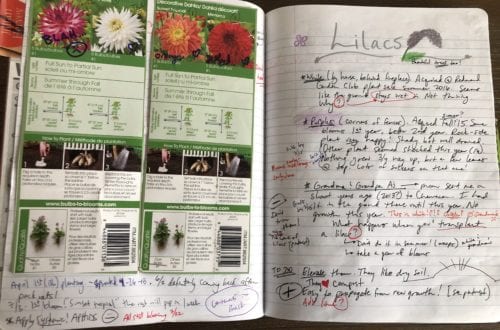
Tools Used for Gardening – Why You Need A Garden Journal
February 24, 2019
Spring Garden Prep – Simple Steps to Get the Garden Ready for Growing
March 26, 2019


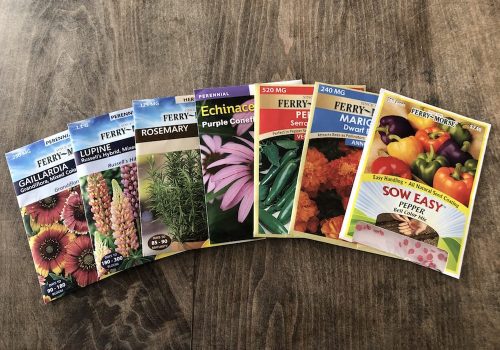
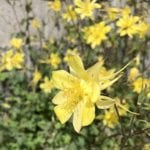

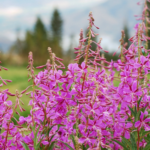
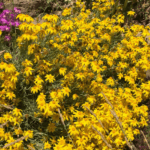
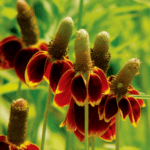





One Comment
Pingback: